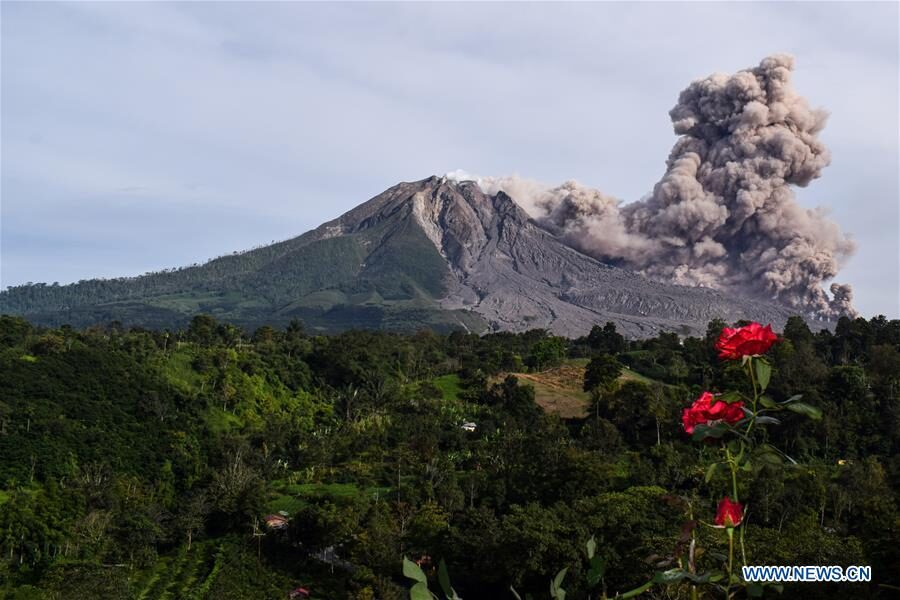
The eruption occurred at around 7:52 a.m. local time and followed an eruption on Sunday in which the volcano ejected hot ash clouds but not an ash column.
"This is the first time this month that the volcano erupted hot clouds together with volcanic ash," Mt. Sinabung observation team member Armen Saputra told The Jakarta Post on Wednesday.
Some areas around the volcano were covered in thick ash following the eruption, including tourist destinations such as Kabanjahe and Berastagi, Armen said, citing strong wind as the cause behind the spread of the ash that reached as far as 10 kilometers.
"We urge tourists visiting Karo to stay alert; don't forget to wear masks because ash particles from Mt. Sinabung's eruption can be quite dangerous for your health."
Armen did not rule out the possibility of a stronger eruption occurring within the next few days due to the increasing volcanic activity, signified by the formation of a relatively large lava dome in the volcano's crater that could potentially cause hot cloud eruptions.
Karo Disaster Mitigation Agency (BPBD) acting head Nataniel Peranginangin said areas around the mountain were safe, adding that firefighters had sprayed the affected areas, such as Berastagi, to minimize the volcano's impact on tourism.
"The situation is now under control. We have sprayed areas exposed to volcanic ash. Everything is normal again," said Nataniel, hoping that further eruptions would not affect tourists, who had only started arriving after large-scale social restrictions were loosened.
The BPBD evacuated residents living within a 4-5 km radius from the mountain to prevent future casualties as Sinabung's volcanic activities continued to increase, he added. Mt. Sinabung, with an altitude of 2,460 m above sea level, emitted 5,000-m-high ash columns during four eruptions in August.
While there were no casualties from the disaster, the volcanic ash disturbed local activities and caused crop failures. This month alone, the mountain has erupted dozens of times while emitting hot clouds, with the largest occurring on Sunday and Thursday.
After a major eruption in August 2010, Sinabung's volcanic activities decreased from September 2010 to 2013, when authorities increased its alert status due to continuous eruptions. Thousands were evacuated and dozens were killed by hot clouds in November 2013. Authorities declared the highest alert status — level four — for the volcano from the November eruptions until May 2019. The alert status has since stayed at level three.



Reader Comments